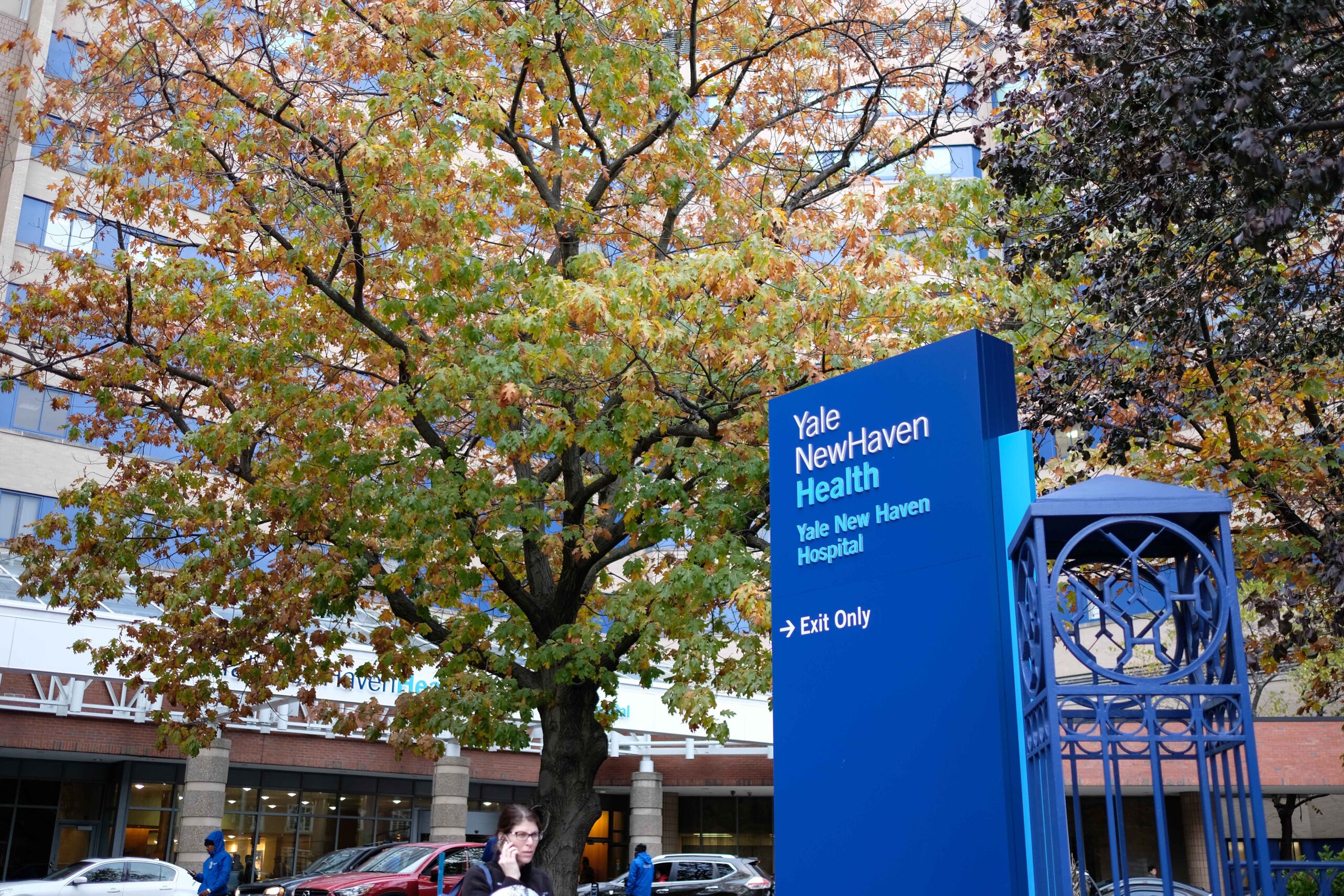YNHH surgeon performs wide-awake ankle surgery
For the third time in Connecticut, Dr. Arriana Gianakos performed ankle surgery on an awake patient at Yale New Haven Hospital.

Eric Wang
Lying on the operating table, Allison Aviles watched her surgery being performed on her ankle in real-time.
This was the third-ever awake ankle surgery performed in Connecticut. All three have been performed by Dr. Arriana Gianakos, an orthopedic surgeon at Yale New Haven Hospital. Wide-awake ankle surgery helps reduce the need for pain medication and narcotics, reducing potential risks associated with general anesthesia while offering faster recovery for patients.
“There are maybe two or three other surgeons that do wide awake types of similar procedures in the country,” Gianakos said. “So it’s pretty exciting and very new.”
Gianakos said she began the procedure with providing local anesthetic and testing it by asking the patient for live feedback. The entire procedure only lasted 35 minutes and was made possible by the new technology she developed.
Gianakos developed a smaller 1.9 millimeter camera, half the size of previous cameras, which allows for smaller incisions and is more flexible to go into joints and tendons. Gianakos developed an entire instrument tray that she calls the “micro-arthroscopy set,” which allows for surgery with an incision so small that it does not even require stitches. The purpose of developing these tools is to avoid creating larger incisions in order to accommodate existing instruments.
The most unique part of the surgery was the ability for live interaction between the doctor and patient while the procedure took place. Gianakos emphasized that patients were always given multiple options to choose how the procedure would happen: they could use their laptops or phones, wear headphones and choose to not be involved in the procedure. Most patients, however, choose to know what is happening during the surgery, Gianakos said.
Gianakos checked in constantly with Aviles during the procedure, she said, while explaining what she was doing.
Aviles found it extremely “validating” to be able to see the cause of her pain and see it being fixed live on screen. She was also involved in the surgery, as Gianakos could ask her questions during the procedure.
“Something that she wouldn’t have been able to do if I was asleep was at the end of my procedure. She had me move my ankle myself while I couldn’t feel pain,” said Aviles. “I would have been able to tell you if I’m feeling clicking or not, and if it was still clicking, that means there’s still scar tissue that she had to remove, and then she would have gone back in and looked at where the clicking was.”
Aviles has already injured her ankle once before, prompting a previous surgery. When she re-injured it, becoming unable to walk, she found that conservative options such as physical therapy and injections into her ankle were not effective.
She was presented with two options: undergoing traditional surgery or becoming the third person ever to experience awake ankle surgery.
“Not everyone is comfortable being awake and having people in your ankle, and this being the third time, it’s still new, and that can be concerning, especially since these instruments are new as well,” said Aviles. “I’m very big about advancements in science. So I was like, ‘Sure, I’d rather be awake.’”
According to Gianakos, there are multiple benefits to wide-awake ankle surgery. First, there is a lower risk of complications from general anesthesia, one of the most dangerous parts of surgery. Preliminary studies show that there are less risks, complications and morbidity overall with awake surgeries, Gianakos added.
This type of surgery is also more convenient for the patient. Aviles noted her recovery was faster than the first surgery because she didn’t need stitches and was able to go to normal activities within the next few days.
“It’s way less inconvenient on the patient side,” Aviles said. “I didn’t have to stop eating by midnight. I didn’t need a ride to and from. I didn’t need to arrange other people to cook me dinners or bring me things. I’m able to still care for myself. So on the patient side, it was like night and day from my first surgery.”
Gianakos noted that patient selection is an important consideration before performing awake surgery. It was crucial to identify which patients would be suitable for wide-awake procedures, she said, as well as to understand how to best accommodate the patients before, during, and after the procedure.
Another main challenge was the learning curve for surgeons. Due to the new instruments required, Gianakos explained that surgeons must be “very confident” in their skill set. Also, the aspect of interacting with the patient and explaining what’s going on while keeping the patient calm is another challenge for surgeons who may not be used to this form of surgery.
“Being comfortable with and having a good bedside manner, being able to talk to the patient and teach the patient and walk through things while operating — I think that’s a unique skill set on its own that you need to practice and develop,” said Gianakos.
Gianakos plans to continue working on wide-awake surgeries into the future. She wants to expand to other types of procedures, including those on different ligaments, tendons, and joints. She plans to continue working on improving technology for these procedures by developing smaller cameras with greater flexibility and sharper images and new instrumentation.
She hopes to make this procedure as accessible as possible by moving into an office, similar to a dentist’s.
“I think ultimately, moving all of these types of cases into, initially, a procedure room and then into the office will be really great,” said Gianakos. “It makes it a lot easier for patients to come in and out. That also will clear up extra time for bigger cases and allow more cases to be done.”
Yale New Haven Hospital is located at 20 York St.







